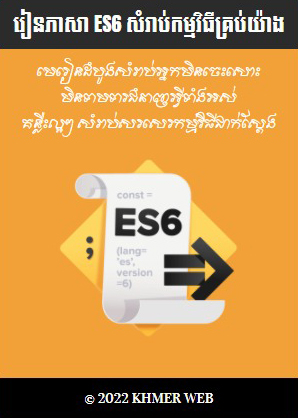នៅក្នុងភាសា Python មានថ្នាក់មានស្រាប់មួយចំនួនត្រូវបានបង្កើតឡើងរួចជាស្រេចទុកនៅក្នុង built-in scope ។ បណ្តាថ្នាក់ទាំងនោះត្រូវហៅថា built-in class
កន្លងមក យើងបានបង្កើតវត្ថុផ្សេងៗ មានដូចជា ចំនួនគត់ ចំនួនពិត និង វត្ថុដែលជា container មួយចំនួនទៀត។ តាមពិត វត្ថុទាំងអស់នោះជា instance នៃថ្នាក់មានស្រាប់ទាំងនោះ តែការបង្កើត instance ទាំងនោះមានលក្ខណៈខុសប្លែកពីការបង្កើត instance នៃថ្នាក់ធម្មតា។
ដើម្បីអោយដឹងថា តើថ្នាក់របស់វត្ថុណាមួយជាអ្វីនោះ យើងត្រូវធ្វើដូចខាងក្រោមនេះ៖
sale = 1000
buy = 800.5
on = True
sentence = 'Python programming language'
mixed_tuple = (100, 1.33, 'name', True)
mixed_list = [2.5, 300, 'last name', False]
mixed_dict = {'sale': 1000, 'buy': 900}
mixed_set = {3.5, True, 'promotion'}
print(type(sale))
print(type(buy))
print(type(on))
print(type(sentence))
print(type(mixed_tuple))
print(type(mixed_list))
print(type(mixed_dict))
print(type(mixed_set))
<class 'int'> <class 'float'> <class 'bool'> <class 'str'> <class 'tuple'> <class 'list'> <class 'dict'> <class 'set'>
គ្រប់វត្ថុដែលជាកំរង list ទាំងអស់ជា instance នៃថ្នាក់ឈ្មោះ list ។ ដូចនេះ យើងអាចបង្កើតកំរង list ផ្សេងៗ ដោយយកថ្នាក់មានស្រាប់ឈ្មោះ list នេះមកប្រើ ដោយធ្វើដូចខាងក្រោមនេះ៖
l1 = list("Python")
l2 = list((100, 1.5, True))
l3 = list({'A': 100, 'B': 1.5, 'C': True})
l4 = list({100, False, 200})
print(l1)
print(l2)
print(l3)
print(l4)
['P', 'y', 't', 'h', 'o', 'n'] [100, 1.5, True] ['A', 'B', 'C'] [False, 100, 200]
យ៉ាងណាម៉ិញ នៅក្នុងថ្នាក់ស្រាប់ឈ្មោះ list មាន method មួយចំនួនដែលយើងអាចយកមកប្រើជាមួយនឹងកំរង list ទាំងឡាយ។ method ទាំងនោះមានដូចតទៅនេះ៖
append() ជា method ប្រើសំរាប់បន្ថែមធាតុណាមួយនៅខាងចុងកំរង list ណាមួយ។
mixed_list = list([100, True, "profit", 3.5])
mixed_list.append('sale')
print(mixed_list)
[100, True, 'profit', 3.5, 'sale']
insert() គឺជា method ប្រើសំរាប់បញ្ចូលវត្ថុណាមួយចូលទៅក្នុងកំរង list ណាមួយ នៅខាងមុខ element មានលេខរៀងណាមួយ។
mixed_list = list([100, True, "profit", 3.5]) mixed_list.insert(2, 'sale') print(mixed_list)
[100, True, 'sale', 'profit', 3.5]
pop() ជា method ប្រើសំរាប់កាត់យក element មានលេខរៀងណាមួយ នៅក្នុងកំរង list ណាមួយមកប្រើការ។
mixed_list = list([100, True, "profit", 3.5]) ele = mixed_list.pop(2) print(ele) print(mixed_list)
profit [100, True, 3.5]
remove() ជា method ប្រើសំរាប់លុប element ណាមួយចេញពីកំរង list ណាមួយ។
mixed_list = list([100, True, "profit", 3.5])
mixed_list.remove('profit')
print(mixed_list)
[100, True, 3.5]
reverse() ជា method ប្រើសំរាប់តំរៀប element នៅក្នុងកំរង list ណាមួយ អោយមានលំដាប់ថ្នាក់បញ្ច្រាសមកវិញ។
mixed_list = list([100, True, "profit", 3.5]) mixed_list.reverse() print(mixed_list)
[3.5, 'profit', True, 100]
sort() ជា method ប្រើសំរាប់តំរៀប element នៅក្នុងកំរង list ណាមួយ អោយមានលំដាប់ថ្នាក់ពីតូចទៅធំ។
mixed_list = list([100, 76, 23, 3.5]) mixed_list.sort() print(mixed_list)
[3.5, 23, 76, 100]























